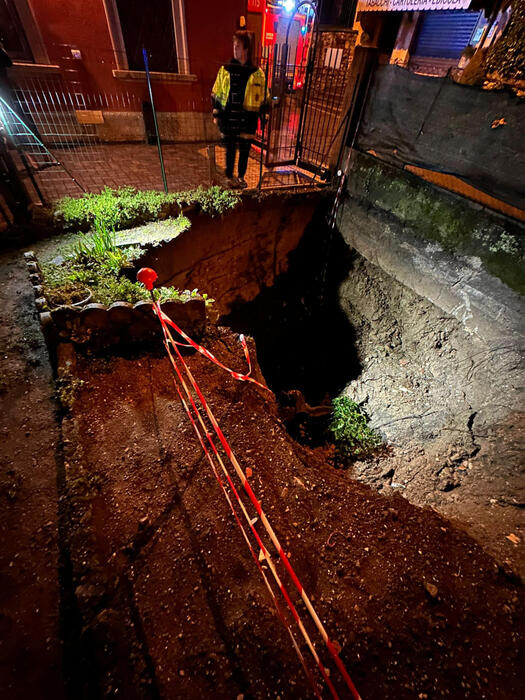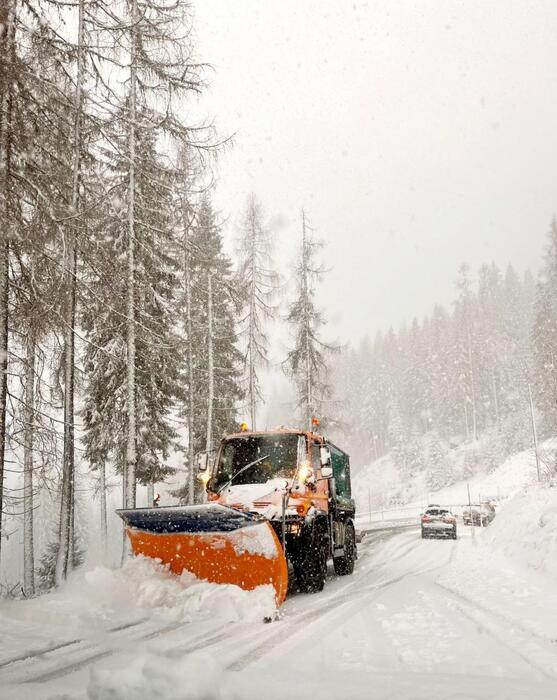Then one says: The sky comes down. Heavy rain can give the impression of a doomsday. How can you protect your property when the masses of water sweep away trees and flood houses?
Munich (dpa / tmn) - Summer also has bad sides: Thunderstorms with heavy rain put entire towns under water. You know the dramatic pictures of crowded cellars and horrified residents who couldn't bring their belongings to safety.
They now come from regions that have been spared from such weather caprices in the past. While living in flood areas on the Rhine and Danube for centuries with frequent flooding, homeowners in other, previously quiet areas are surprised by sudden floods. But: you have to come to terms with that.
"These weather phenomena are a consequence of climate change, which will probably accompany us for a long time," says Prof. Norbert Gebbeken, President of the Bavarian Chamber of Engineers. "Builders and homeowners are well advised to take over know-how from the classic flood areas and to make their home waterproof as much as possible." This is sometimes required by the insurance companies that cover such damage.
Important: You have to keep an eye on the whole house, not just the basement and the ground floor, but also the roof.
Basement must be cleared quickly in an emergency
Basement windows should be pressure-tight or bricked up. But even with this protection, the following applies: "If there is a risk of water penetrating, the basement is not suitable as a living or working space," says Prof. Gebbeken. "You always have to keep in mind that the basement can be cleared quickly in an emergency. Better than a house bar with wood paneling is a functional room with industrial flooring and waterproof paint."
In flood areas, homeowners often have mounts for mobile barriers in front of windows and doors. "This is a good way to keep the water out even in heavy rain and flooding," explains Gebbeken. His tip: "In quiet times, you should consider where such barriers could be useful and put them right away."
Sewer water is the biggest problem
Often the water does not reach the house directly, but rather as a backwater from the sewer network. "According to the principle of communicating pipes, the water always looks for the lowest point, for example the unsecured floor drain in the basement, the washing machine connection or the toilet on the ground floor," explains Andreas Braun from the Central Association for Sanitary Heating and Air Conditioning. This pushes the water up and into the house.
If this lowest point is below the street level, the homeowner must secure the drainage system against backflow - with so-called backflow flaps. Depending on the building geometry, a wastewater lifting plant is also useful. It drains the wastewater backflow-proof or pumps it to a higher level, where it can flow into the collecting line.
"This is standard for drainage systems," says Braun. "Homeowners are obliged to protect themselves against backwater from the sewer network, even in areas where there has been no heavy rain so far." If they haven't done so far, they have to upgrade. Most building insurance policies make clear specifications here and have strong exclusion criteria.
Water damage to the roof - unnoticed for a long time
Floods are not the only problem with strong thunderstorms. "In strong wind events, roof seals, roof coverings and superstructures can be damaged and rainwater can penetrate the roof structure," explains Philip Witte from the Central Association of the German Roofing Trade.
Such damage is not always immediately recognized by the homeowner, so that rain penetrates unnoticed over a longer period of time. This offers mold and, in extreme cases, wood-destroying fungi optimal growth conditions.
After heavy rain, the drainage of the roof area, especially with flat roofs, is very important to avoid damage. "If the roof drains are blocked and emergency drainage, for example due to leaves, in extreme cases the water on the roof surface can rise so far that connection heights are no longer sufficient and the water flows out in an uncontrolled manner," explains Witte.
Emergency drainage for flat roofs
His tip: Since many existing buildings with flat roofs or roof terraces have no emergency drainage, they should be retrofitted as part of a building renovation.
You also have to keep an eye on balconies. "You can only carry a certain maximum load," says Braun. "If there is too much water on it because large containers or a children's paddling pool are full, they can even break off in heavy rainfall." So here you have to consider the basic static requirements.









